Verdict on the Motorola Moto G06
The Motorola Moto G06 is a typical cell phone that will end up in the discount stores: Very affordable and yet it offers passable features for everyday use. The stylish casing makes the phone look more expensive than it actually is.
You shouldn't expect a lot of performance, but the reasonably bright 120 Hz screen without PWM, the battery life and the usable main camera are actually not bad in this price range.
The very short update promise is hardly compatible with the new EU directives and questions also remain unanswered when it comes to sustainability. The waterdrop notch and the low charging power are a step backwards compared to its predecessor.
Overall, the Motorola Moto G06 is an attractive and affordable smartphone with typical price features.
Pros
Cons
Price and availability
The smartphone ist not officially available in the US. In the UK, you can get it for around £200 at amazon.co.uk.
Table of Contents
- Verdict on the Motorola Moto G06
- Specifications
- Case and features - A real designer piece
- Communication and operation - Stable WLAN on the Moto G06
- Software and sustainability - Some question marks
- Cameras - Decent image quality for little money
- Display - Large and flicker-free
- Performance, emissions and battery life - Hardly any power
- Notebookcheck overall rating
- Possible alternatives in comparison
Specifications
Case and features - A real designer piece
We like the fact that Motorola has extended its design philosophy with a faux leather back and seamlessly integrated camera module to its most affordable models.
The Moto G06 is also protected against dust and water, so it can be used in dirty environments without any problems. However, you can't go diving with the phone.
Instead of the punch-hole camera on the front, there is now a waterdrop notch again, which is a step backwards in terms of design. At 194 grams, the phone is slightly heavier than its predecessor and is also a few millimeters longer and wider overall due to the larger screen.
NFC for wireless payments is on board. In terms of memory, you can choose between 64, 128 or 256 GB. 4 GB RAM is available for all models.
The internal memory can be expanded via a microSD card. The card reader worked moderately fast in our test.
| SD Card Reader - average JPG Copy Test (av. of 3 runs) | |
| Motorola Moto G05 (Angelbird V60) | |
| Motorola Moto G06 (Angelbird V60) | |
| Average of class Smartphone (5.72 - 58.9, n=68, last 2 years) | |
| Xiaomi Redmi 15C 4G (Angelbird V60) | |
| Samsung Galaxy A06 (Angelbird V60) | |
Cross Platform Disk Test (CPDT)
Communication and operation - Stable WLAN on the Moto G06
The Moto G06 communicates with Wi-Fi networks reliably and with stable data rates. The speed is at the expected level of around 300 MBit/s, slightly faster than its predecessor.
5G mobile networks are not available and there are not many frequencies available in the LTE range either, but they are sufficient for most European countries. Reception is satisfactory in spot checks during our test.
The screen offers a frame rate of up to 120 Hz and therefore responds quickly to our inputs via the touchscreen. It can be operated reliably.
There is also a fingerprint sensor on the right in the standby button. It reliably recognizes fingers and unlocks the phone with minimal waiting time. Face recognition via the front camera is also possible.
| Networking | |
| Motorola Moto G06 | |
| iperf3 transmit AXE11000 | |
| iperf3 receive AXE11000 | |
| Motorola Moto G05 | |
| iperf3 transmit AXE11000 | |
| iperf3 receive AXE11000 | |
| Xiaomi Redmi 15C 4G | |
| iperf3 transmit AXE11000 | |
| iperf3 receive AXE11000 | |
| Samsung Galaxy A06 | |
| iperf3 transmit AXE11000 | |
| iperf3 receive AXE11000 | |
| Average 802.11 a/b/g/n/ac | |
| iperf3 transmit AXE11000 | |
| iperf3 receive AXE11000 | |
| Average of class Smartphone | |
| iperf3 transmit AXE11000 | |
| iperf3 receive AXE11000 | |
Software and sustainability - Some question marks
Android 15 is pre-installed, Motorola only makes minor changes to the software. Third-party advertising apps are pre-installed ex works.
As with its predecessor, Motorola will only provide updates for the Moto G06 for two years from the date of release, i.e. until August 2027. It remains to be seen how this complies with the new EU directives.
There is no information on sustainability. At least the packaging is plastic-free.
Cameras - Decent image quality for little money
You should not expect a photo system with multiple lenses on the Moto G06. The only camera has a resolution of 50 megapixels, the full resolution can be used in a special mode. Here, however, the camera clearly loses light intensity.
In conventional mode, the resolution of the images is 12.5 megapixels, some of which appear somewhat coarse in detail, but are not too bad overall for the price range.
In low light and high contrasts, there is actually still a decent level of sharpness, but in dark areas, hardly anything is recognizable.
The front camera takes passable selfies, but they look quite cool in terms of color.
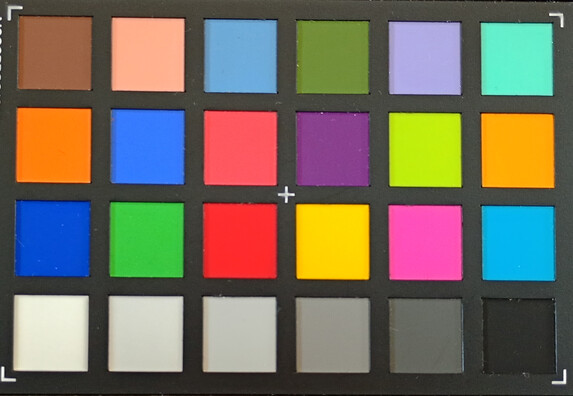

Display - Large and flicker-free
With its large 6.88-inch screen and a resolution of 1,640 x 720 pixels, the phone only achieves 260 PPI, which leads to a somewhat coarse picture in some cases.
The maximum brightness of over 530 cd/m² is quite good and is sufficient for somewhat brighter environments. Motorola thus also compensates for a weakness of its predecessor, which offered significantly less brightness.
The color reproduction shows a slight blue cast. We did not notice any PWM flickering.
| |||||||||||||||||||||||||
Brightness Distribution: 94 %
Center on Battery: 531 cd/m²
Contrast: 1770:1 (Black: 0.3 cd/m²)
ΔE ColorChecker Calman: 4.28 | ∀{0.5-29.43 Ø4.79}
ΔE Greyscale Calman: 3.6 | ∀{0.09-98 Ø5}
93.6% sRGB (Calman 2D)
Gamma: 2.235
CCT: 7429 K
| Motorola Moto G06 IPS, 1640x720, 6.9" | Motorola Moto G05 IPS, 1612x720, 6.6" | Xiaomi Redmi 15C 4G IPS, 1600x720, 6.9" | Samsung Galaxy A06 IPS, 1600x720, 6.7" | |
|---|---|---|---|---|
| Screen | 9% | -6% | -59% | |
| Brightness middle (cd/m²) | 531 | 370 -30% | 526 -1% | 505 -5% |
| Brightness (cd/m²) | 512 | 358 -30% | 513 0% | 475 -7% |
| Brightness Distribution (%) | 94 | 92 -2% | 95 1% | 89 -5% |
| Black Level * (cd/m²) | 0.3 | 0.24 20% | 0.4 -33% | 0.53 -77% |
| Contrast (:1) | 1770 | 1542 -13% | 1315 -26% | 953 -46% |
| Colorchecker dE 2000 * | 4.28 | 2.09 51% | 6.4 -50% | 5.94 -39% |
| Colorchecker dE 2000 max. * | 6.77 | 5.49 19% | 4.88 28% | 21.63 -219% |
| Greyscale dE 2000 * | 3.6 | 1.7 53% | 2.3 36% | 6.2 -72% |
| Gamma | 2.235 98% | 2.317 95% | 2.116 104% | |
| CCT | 7429 87% | 6405 101% | 6785 96% | 8333 78% |
| Colorchecker dE 2000 calibrated * | 8.86 |
* ... smaller is better
Screen Flickering / PWM (Pulse-Width Modulation)
| Screen flickering / PWM not detected | |||
In comparison: 53 % of all tested devices do not use PWM to dim the display. If PWM was detected, an average of 8152 (minimum: 5 - maximum: 343500) Hz was measured. | |||
Display Response Times
| ↔ Response Time Black to White | ||
|---|---|---|
| 28.1 ms ... rise ↗ and fall ↘ combined | ↗ 13 ms rise | |
| ↘ 15.1 ms fall | ||
| The screen shows relatively slow response rates in our tests and may be too slow for gamers. In comparison, all tested devices range from 0.1 (minimum) to 240 (maximum) ms. » 74 % of all devices are better. This means that the measured response time is worse than the average of all tested devices (20.3 ms). | ||
| ↔ Response Time 50% Grey to 80% Grey | ||
| 42.9 ms ... rise ↗ and fall ↘ combined | ↗ 23.5 ms rise | |
| ↘ 19.4 ms fall | ||
| The screen shows slow response rates in our tests and will be unsatisfactory for gamers. In comparison, all tested devices range from 0.165 (minimum) to 636 (maximum) ms. » 70 % of all devices are better. This means that the measured response time is worse than the average of all tested devices (31.7 ms). | ||
Performance, emissions and battery life - Hardly any power
The MediaTek Helio G81 is a rather slow SoC; even in this price range, other manufacturers can sometimes offer a little more power. You also have to do without the latest graphics interfaces, which means that some games may not run.
The temperature of the chassis always remains below 40 °C and is therefore very reasonable. The phone does not throttle in the stress tests either.
The small speaker on the bottom edge is supported by the earpiece, so slight stereo effects are possible. The phone can produce a fairly loud sound, but this is clearly at the expense of sound accuracy.
If you reduce the volume a little, the sound is more pleasant and precise. A 3.5mm jack or Bluetooth is available for sound output. Wireless audio devices can be connected via a variety of codecs.
The battery life is completely OK for the price range: Motorola gets 16:42 hours out of the 5,200 mAh battery in our WLAN test. That should get you through the day.
However, charging is only possible with up to 10 watts. This increases the maximum charging time compared to the predecessor: it is now more than 2 hours.
| Geekbench AI | |
| Single Precision NPU 1.5 | |
| Average of class Smartphone (80 - 5210, n=49, last 2 years) | |
| Xiaomi Redmi 15C 4G | |
| Motorola Moto G06 | |
| Average Mediatek Helio G81 (n=1) | |
| Half Precision NPU 1.5 | |
| Average of class Smartphone (80 - 36297, n=49, last 2 years) | |
| Xiaomi Redmi 15C 4G | |
| Motorola Moto G06 | |
| Average Mediatek Helio G81 (n=1) | |
| Quantized NPU 1.5 | |
| Average of class Smartphone (133 - 49889, n=49, last 2 years) | |
| Motorola Moto G06 | |
| Average Mediatek Helio G81 (n=1) | |
| Xiaomi Redmi 15C 4G | |
| Motorola Moto G06 | Motorola Moto G05 | Xiaomi Redmi 15C 4G | Samsung Galaxy A06 | Average 256 GB eMMC 5.1 Flash | Average of class Smartphone | |
|---|---|---|---|---|---|---|
| AndroBench 3-5 | -9% | -13% | -18% | -19% | 429% | |
| Sequential Read 256KB (MB/s) | 301 | 289.9 -4% | 298.5 -1% | 295.4 -2% | 278 ? -8% | 2213 ? 635% |
| Sequential Write 256KB (MB/s) | 243.5 | 246.8 1% | 201.1 -17% | 166.3 -32% | 214 ? -12% | 1829 ? 651% |
| Random Read 4KB (MB/s) | 100 | 100.8 1% | 87.4 -13% | 74 -26% | 80.5 ? -19% | 293 ? 193% |
| Random Write 4KB (MB/s) | 99.2 | 67.6 -32% | 77.5 -22% | 86.8 -12% | 63.8 ? -36% | 335 ? 238% |
(+) The maximum temperature on the upper side is 39.7 °C / 103 F, compared to the average of 35.2 °C / 95 F, ranging from 21.9 to 247 °C for the class Smartphone.
(+) The bottom heats up to a maximum of 38.4 °C / 101 F, compared to the average of 34 °C / 93 F
(+) In idle usage, the average temperature for the upper side is 24.5 °C / 76 F, compared to the device average of 32.9 °C / 91 F.
3DMark Stress Tests
| 3DMark | |
| Wild Life Stress Test Stability | |
| Motorola Moto G06 | |
| Motorola Moto G05 | |
| Xiaomi Redmi 15C 4G | |
| Samsung Galaxy A06 | |
| Wild Life Extreme Stress Test | |
| Motorola Moto G06 | |
| Motorola Moto G05 | |
| Xiaomi Redmi 15C 4G | |
Motorola Moto G06 audio analysis
(+) | speakers can play relatively loud (87.5 dB)
Bass 100 - 315 Hz
(-) | nearly no bass - on average 20.3% lower than median
(±) | linearity of bass is average (11.9% delta to prev. frequency)
Mids 400 - 2000 Hz
(±) | higher mids - on average 8% higher than median
(+) | mids are linear (6.4% delta to prev. frequency)
Highs 2 - 16 kHz
(+) | balanced highs - only 4.4% away from median
(+) | highs are linear (6.8% delta to prev. frequency)
Overall 100 - 16.000 Hz
(±) | linearity of overall sound is average (19.2% difference to median)
Compared to same class
» 24% of all tested devices in this class were better, 9% similar, 67% worse
» The best had a delta of 11%, average was 35%, worst was 134%
Compared to all devices tested
» 45% of all tested devices were better, 7% similar, 48% worse
» The best had a delta of 4%, average was 24%, worst was 134%
Samsung Galaxy A06 audio analysis
(+) | speakers can play relatively loud (84.6 dB)
Bass 100 - 315 Hz
(-) | nearly no bass - on average 31% lower than median
(±) | linearity of bass is average (11.2% delta to prev. frequency)
Mids 400 - 2000 Hz
(±) | reduced mids - on average 5.7% lower than median
(±) | linearity of mids is average (7.2% delta to prev. frequency)
Highs 2 - 16 kHz
(±) | higher highs - on average 8.3% higher than median
(±) | linearity of highs is average (8.5% delta to prev. frequency)
Overall 100 - 16.000 Hz
(±) | linearity of overall sound is average (26.5% difference to median)
Compared to same class
» 67% of all tested devices in this class were better, 6% similar, 27% worse
» The best had a delta of 11%, average was 35%, worst was 134%
Compared to all devices tested
» 81% of all tested devices were better, 4% similar, 15% worse
» The best had a delta of 4%, average was 24%, worst was 134%
| Motorola Moto G06 5200 mAh | Motorola Moto G05 5200 mAh | Xiaomi Redmi 15C 4G 6000 mAh | Samsung Galaxy A06 5000 mAh | |
|---|---|---|---|---|
| Battery runtime | ||||
| WiFi v1.3 (h) | 16.7 | 16.2 -3% | 21 26% | 15.6 -7% |
Notebookcheck overall rating
A fairly bright screen and a stylish casing are the highlights of the affordable Motorola Moto G06.
However, there are also minor setbacks compared to the Moto G05.
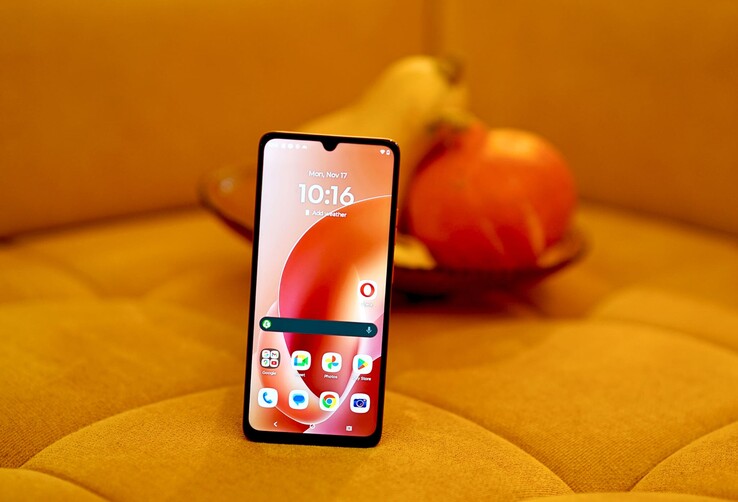
Motorola Moto G06
- 11/17/2025 v8
Florian Schmitt
Possible alternatives in comparison
Image | Model / Review | Price | Weight | Drive | Display |
|---|---|---|---|---|---|
| Motorola Moto G06 Mediatek Helio G81 ⎘ ARM Mali-G52 MP2 ⎘ 4 GB Memory, 256 GB eMMC | Amazon: 1. $7.99 beukei (3 Pack) Compatible f... 2. $7.99 Lucyliy (3 Pack) Compatible ... 3. $129.99 Motorola Moto G Power 5G | 2... List Price: 129€ | 194 g | 256 GB eMMC 5.1 Flash | 6.88" 1640x720 260 PPI IPS | |
| Motorola Moto G05 Mediatek Helio G81 ⎘ ARM Mali-G52 MP2 ⎘ 4 GB Memory, 64 GB eMMC | Amazon: 1. $109.00 Motorola Moto G05 XT2523-2 D... 2. $4.99 Mr.Shield Screen Protector c... 3. $32.99 Ygpmoiki LCD Screen Display ... List Price: 130€ | 189 g | 64 GB eMMC Flash | 6.56" 1612x720 269 PPI IPS | |
| Xiaomi Redmi 15C 4G Mediatek Helio G81 Ultra ⎘ ARM Mali-G52 MP2 ⎘ 4 GB Memory, 128 GB eMMC | Amazon: $148.50 List Price: 150€ | 211 g | 128 GB eMMC Flash | 6.90" 1600x720 254 PPI IPS | |
| Samsung Galaxy A06 Mediatek Helio G85 ⎘ ARM Mali-G52 MP2 ⎘ 4 GB Memory, 64 GB eMMC | Amazon: $104.97 List Price: 90€ | 189 g | 64 GB eMMC Flash | 6.70" 1600x720 262 PPI IPS |
Transparency
The selection of devices to be reviewed is made by our editorial team. The test sample was provided to the author as a loan by the manufacturer or retailer for the purpose of this review. The lender had no influence on this review, nor did the manufacturer receive a copy of this review before publication. There was no obligation to publish this review. As an independent media company, Notebookcheck is not subjected to the authority of manufacturers, retailers or publishers.
This is how Notebookcheck is testing
Every year, Notebookcheck independently reviews hundreds of laptops and smartphones using standardized procedures to ensure that all results are comparable. We have continuously developed our test methods for around 20 years and set industry standards in the process. In our test labs, high-quality measuring equipment is utilized by experienced technicians and editors. These tests involve a multi-stage validation process. Our complex rating system is based on hundreds of well-founded measurements and benchmarks, which maintains objectivity. Further information on our test methods can be found here.














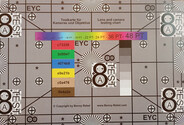

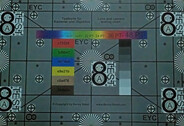

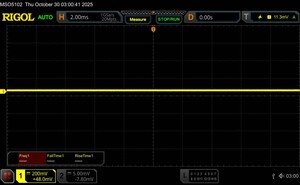


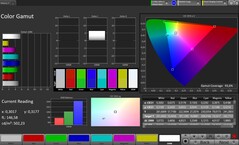


 Total Sustainability Score:
Total Sustainability Score: 











